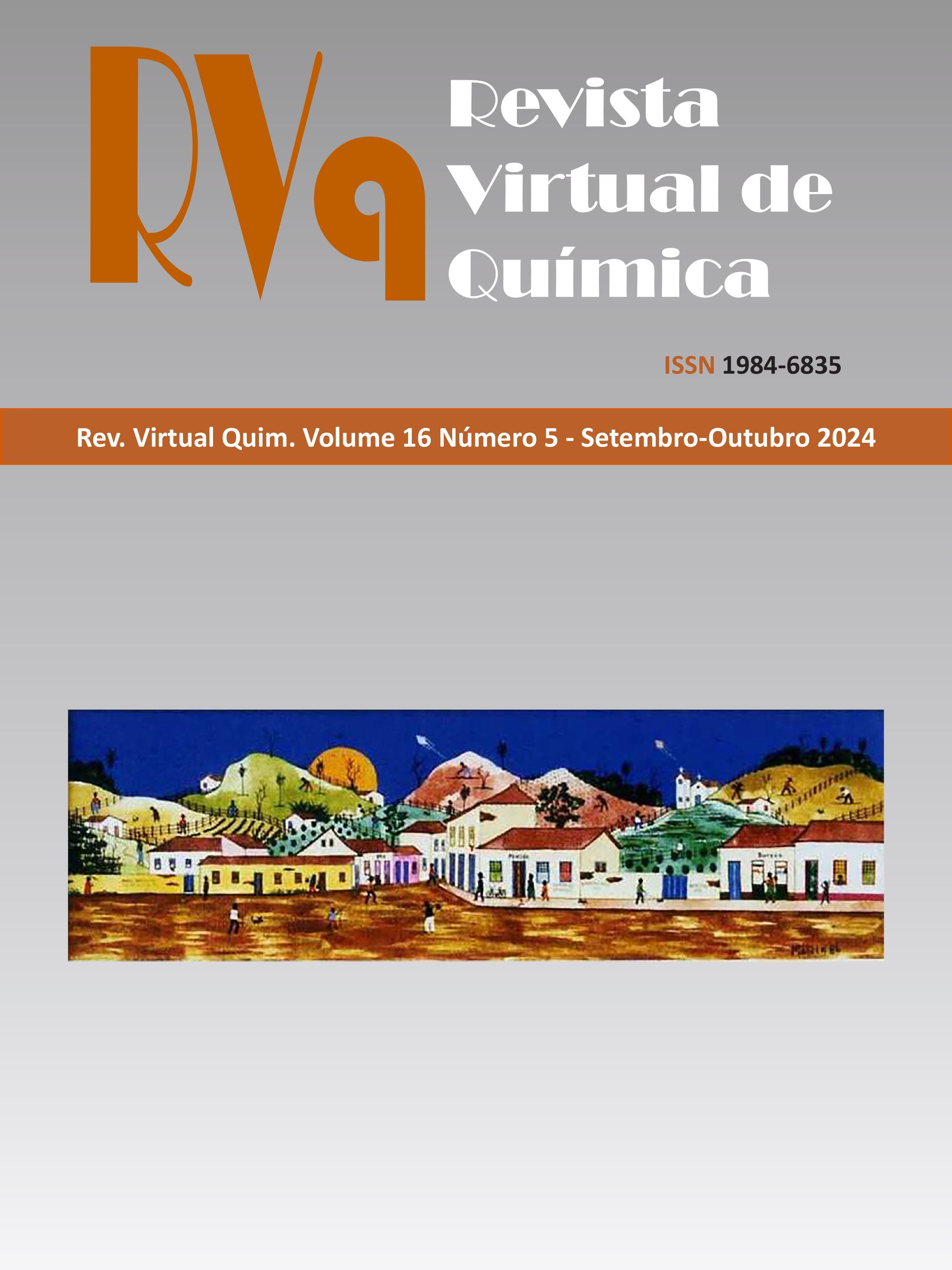Extração da Celulose do Bagaço de Cana-de-açúcar e Aplicação como Tecnologia de Fertilizantes de Eficiência Aprimorada
DOI:
https://doi.org/10.21577/1984-6835.20240026Resumo
Enhanced efficiency fertilizers (EEF) are structures that can delay the availability of plant nutritional content, minimizing environmental pollution by reducing the loss of agricultural inputs during application. The literature on this subject highlights the use of several natural sources, due to their intrinsic characteristics of biodegradability, non-toxicity and interaction with soil. This paper describes a chemical route for the synthesis of an enhanced efficiency fertilizer, using sugarcane bagasse to produce a cellulose-based EEF. The results indicated that cellulose was converted from cellulose I to cellulose II, and that lignin, hemicellulose and other carbohydrates (polyoses) were eliminated, generating a mass loss of 61.14%. The esterification of cellulose with ethylenediaminetetraacetic acid dianhydride was proven, as was the incorporation of the macronutrient’s nitrogen, phosphorus and potassium. The insertion of fertilizers into the cellulose matrix became evident by FTIR, where characteristic bands of NH4+ and H2PO4- were identified, as well as the presence of K by MEV-EDS. Nutrients are gradually released into water at a rate of 15% for six hours. The results of this experiment are promising, since the synthesized product can complex the added nutrients and gradually release them into water.
Downloads
Publicado
Edição
Seção
Licença
Copyright (c) 2024 Revista Virtual de Química

Este trabalho está licenciado sob uma licença Creative Commons Attribution-NonCommercial-NoDerivatives 4.0 International License.
Autores que publicam nesta revista concordam com os seguintes termos:
Os direitos autorais para artigos publicados nesta revista são do autor, com direitos de primeira publicação para a revista. Em virtude do acesso público, os artigos são de uso gratuito em aplicações educacionais e não-comerciais desde que com reconhecimento da autoria e da publicação nesta revista.

